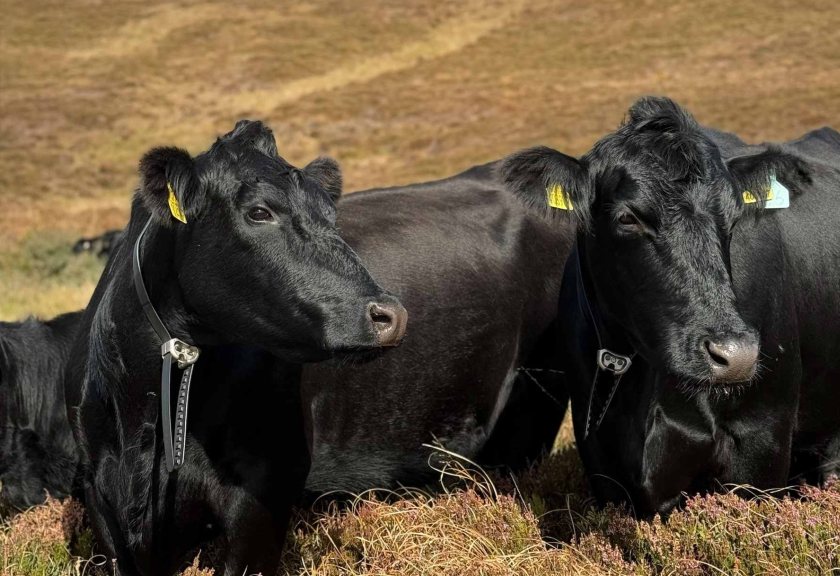
Virtual fencing collars are helping Scottish farmers cut time, improve grazing, and manage cattle more effectively — though poor connectivity remains a stumbling block.
Four Monitor Farms — Argyllshire, South Ayrshire, Stirlingshire and Strathspey — are each trialling 25 collars supplied by Norwegian company Monil.
The collars, fitted to cattle, emit signals to establish “virtual” boundaries managed through a smartphone app. Farmers can view live maps of grazing areas, monitor animal locations, and receive alerts if a cow escapes or stops moving.
Over two years, the project will assess the cost-benefit of virtual fencing, with early signs already pointing to better grazing efficiency and reduced overgrazing.
In South Ayrshire, David Andrew says the collars have transformed day-to-day work. Locating calving heifers on hill ground that once took up to an hour can now be done in 15 minutes.
“I now wonder how we did it before this technology,” he said. The system has also enabled cattle to graze areas they would not normally visit, improving land use and benefiting neighbouring sheep flocks.
In Strathspey, brothers Calum and Hamish Smith have rotated heifers around three large “virtual paddocks” with positive results, although they acknowledge some breakouts and collar issues. “The cattle and the hill look well,” said Calum, noting they hope to keep stock out longer into autumn.
For others, connectivity has been more problematic. At the Stirlingshire Monitor Farm, Rebecca Duncan said poor signal meant collars had been used “more like trackers”, with some animals becoming stuck inside virtual boundaries.
On Islay, Argyll farmer Craig Archibald also faced challenges in shadowed pastures but praised the collars for helping cattle graze rougher ground and making sheep gathering easier.
Grass analysis on Archibald’s farm has already shown improvements in quality, with cattle maintaining condition and likely to be outwintered for the first time — freeing up housing space and reducing costs.
Monitor Farm regional adviser Christine Cuthbertson said it was encouraging to see the technology in action. “It has been really interesting to see how the different farms have found using the collars.
The connectivity issues have been a challenge, especially for the Stirlingshire Monitor Farm, but we hope this will be resolved shortly.”
If the system proves cost-effective, advisers say virtual fencing could become a game-changer for managing Scotland’s hill and upland grazing in years to come.
